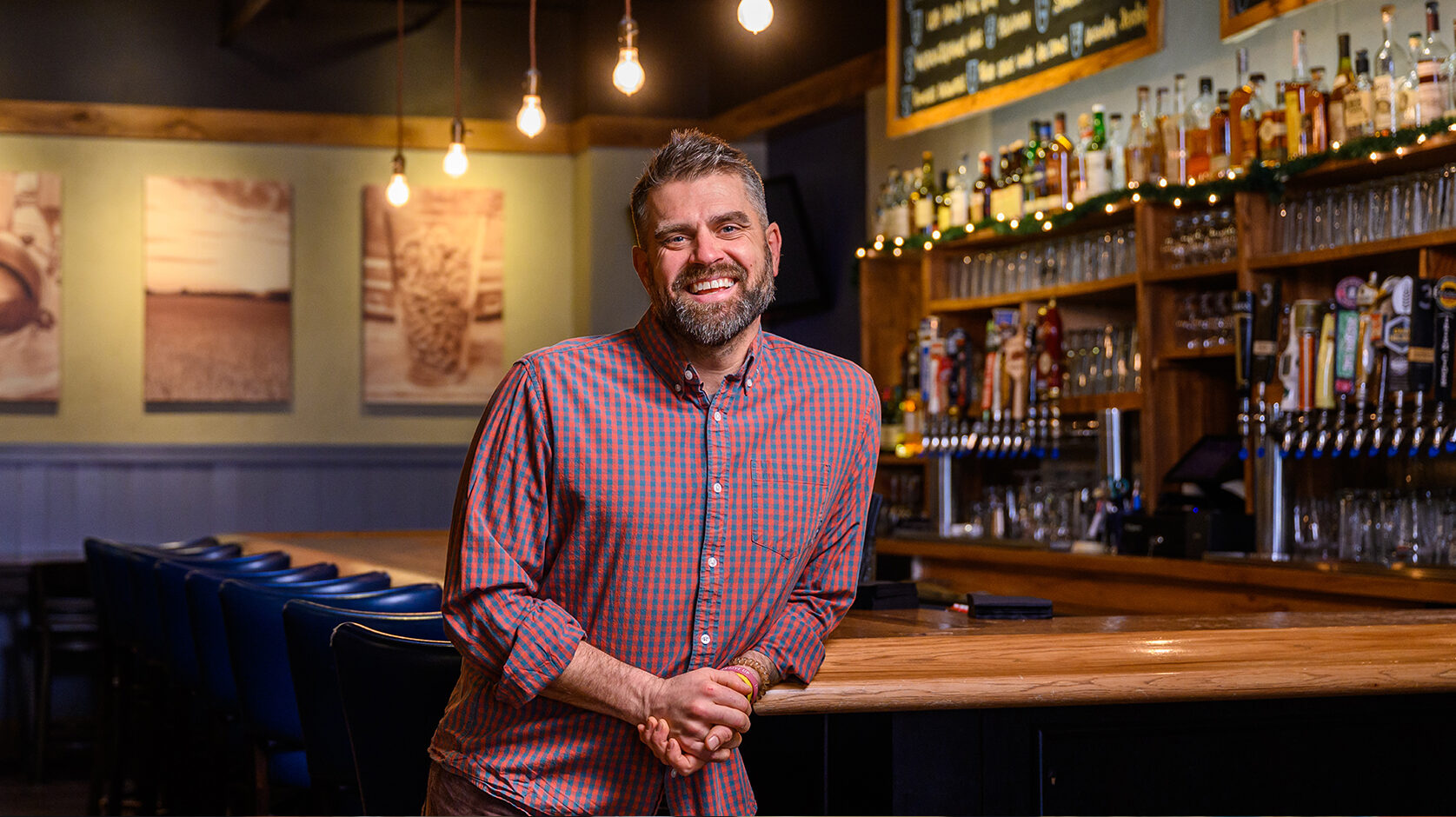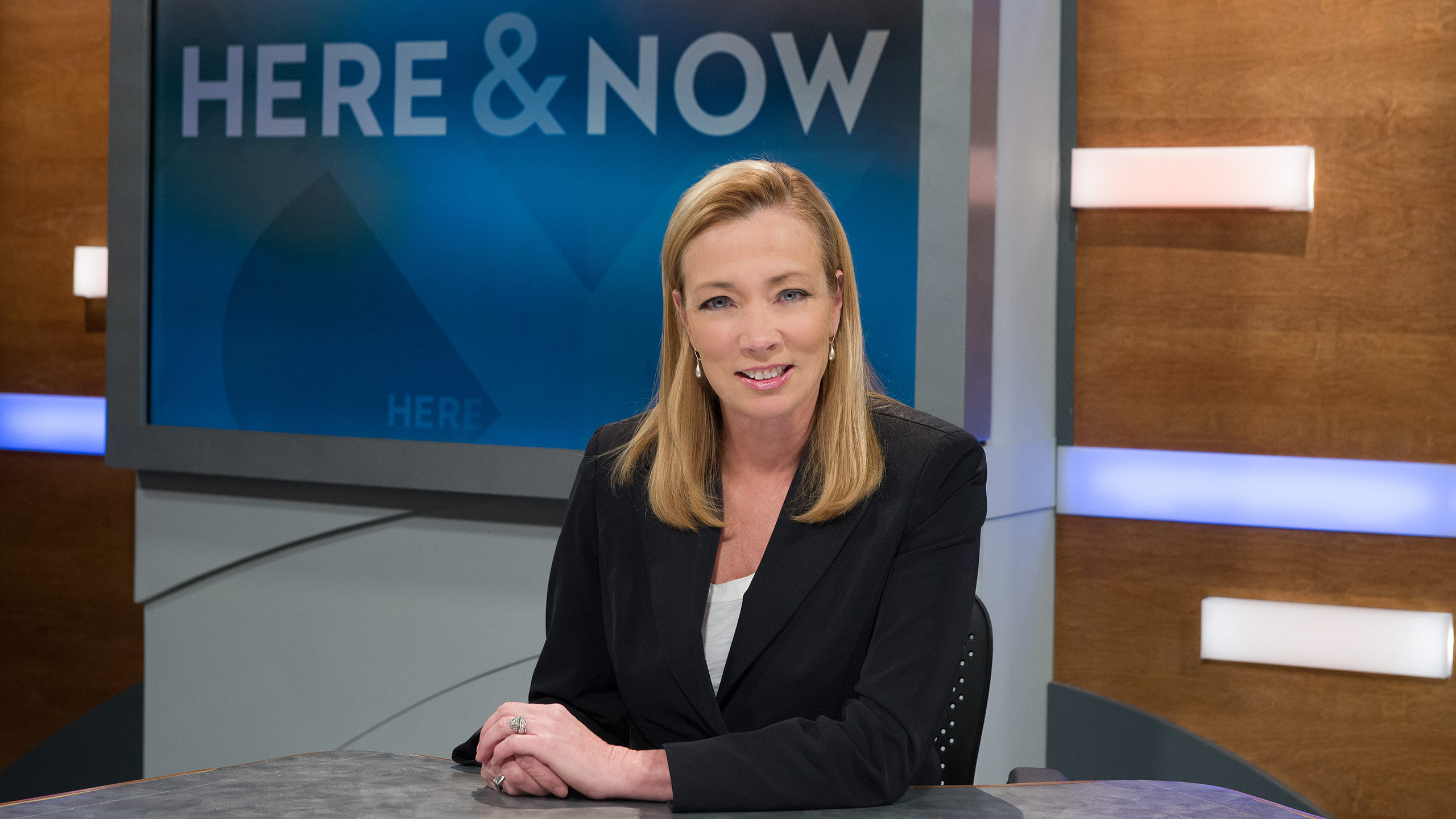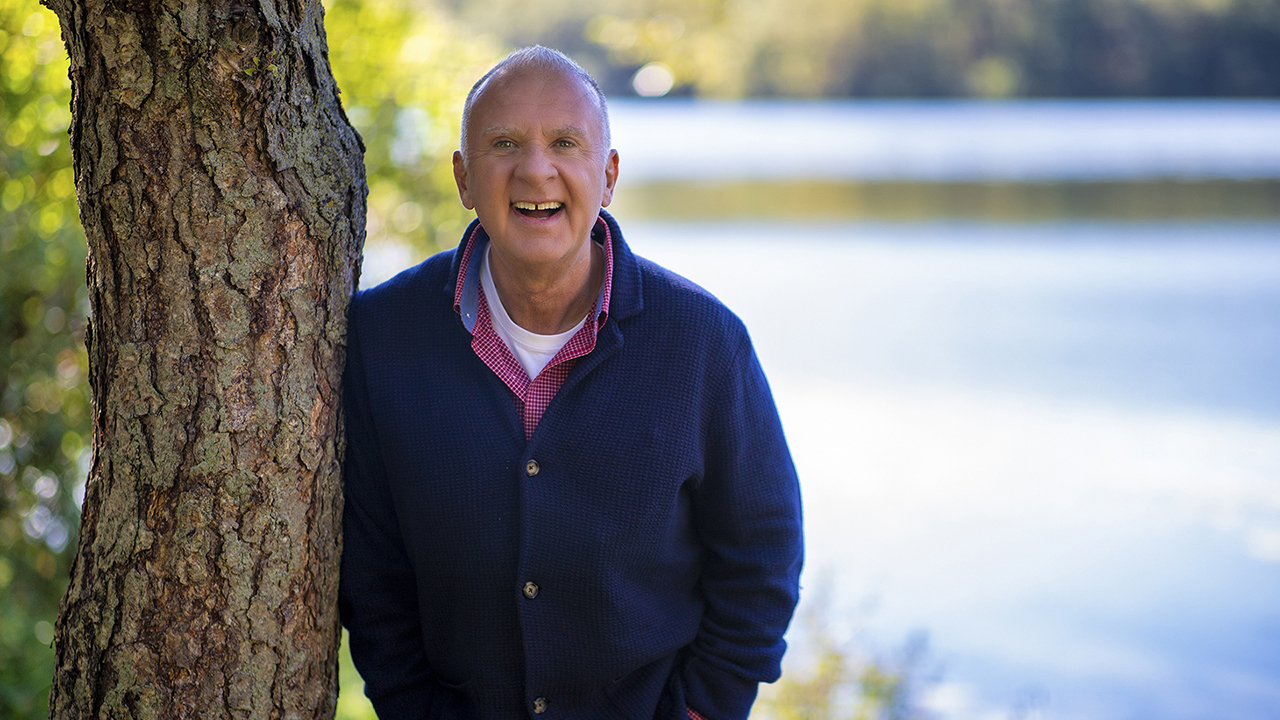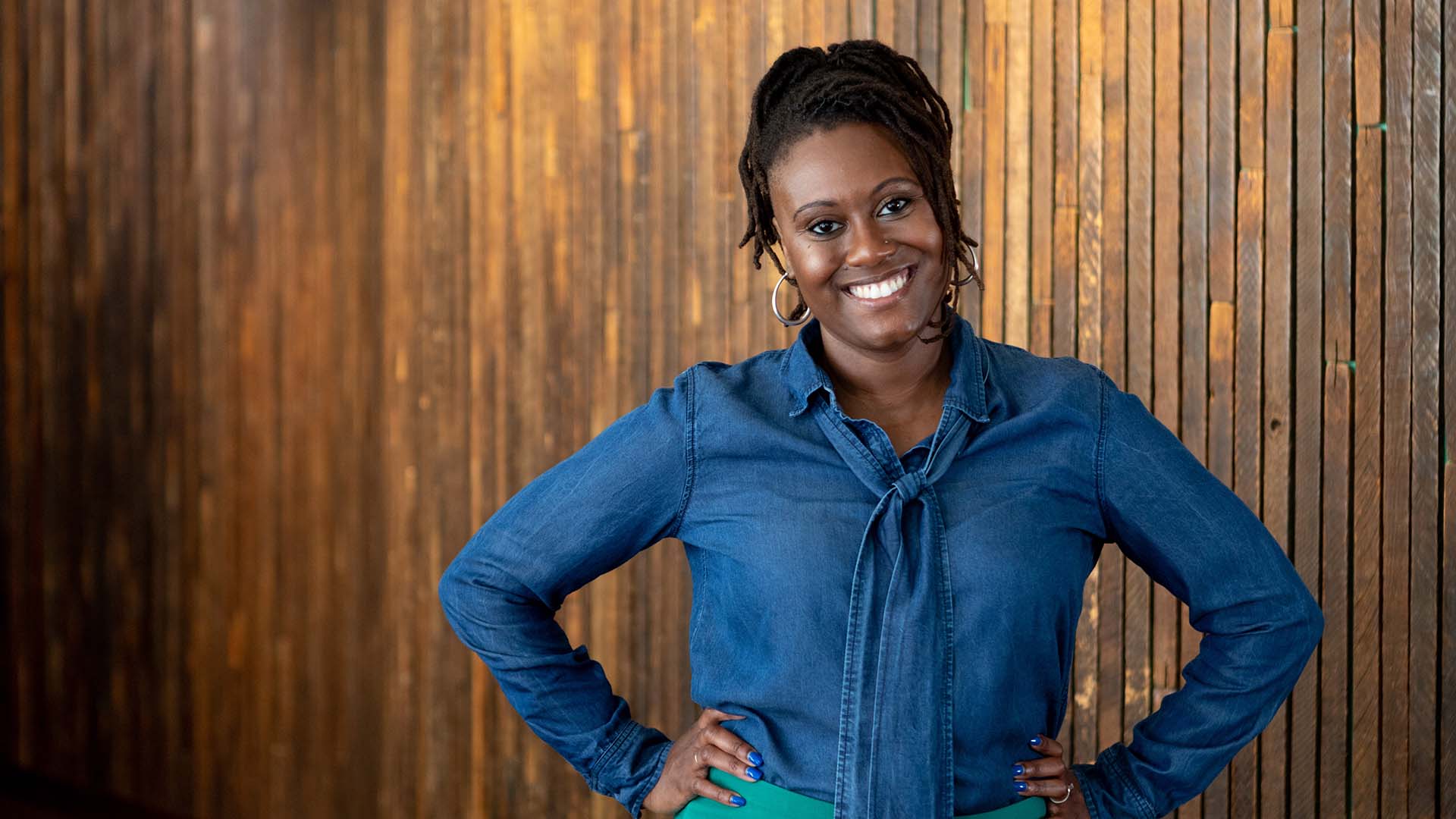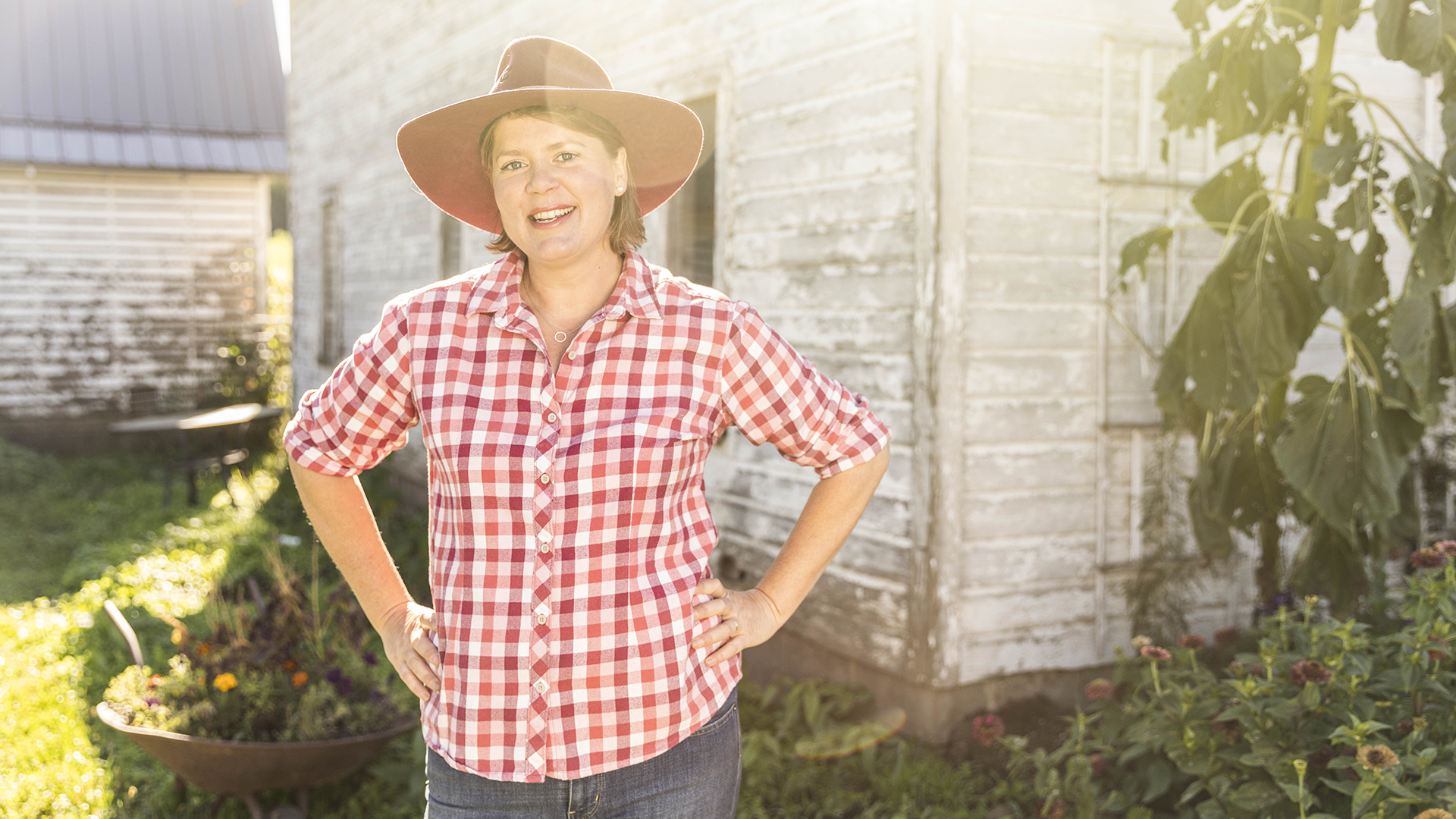All-new ‘Around the Farm Table’ visits Prairie Farm on March 3
March 1, 2022 Leave a Comment
Join PBS Wisconsin for an all-new Around the Farm Table as host Inga Witscher visits and shares a meal with unique farmers of Prairie Farm, Wisconsin.
The “Friends in Prairie Farm” episode introduces viewers to a flower grower at Green Light Farm, pumpkin seed oil producers at Hay River farm, and goat farmers at EB Ranch. It premieres 7 p.m. Thursday, March 3 on PBS Wisconsin and on the free PBS Video App.
Ahead of the premiere, PBS Wisconsin spoke with Hay River farm owners Jay Gilbertson and Ken Seguine, producers of America’s first pumpkin seed oil. Read their Q&A below and watch this short video created during Hay River’s pumpkin harvest last fall!
PBS Wisconsin: Why pumpkin seed oil?
Ken: It was one of three things we were thinking we could do when we moved to our land. The other things were peonies as a cut flower, I like flowers a lot and this is the ideal climate for peonies, and I had worked in the natural products industry. We had considered doing woods-grown herbs, which there’s a real market for. We did all three of those things. We planted a ton of stuff in the woods, we purchased about 40 peony plants and started some trials there, and then we planted pumpkins. One thing led to another. The wood-grown stuff, the turkeys ate them and they disappeared and it didn’t work. The peonies we like a lot, we grow peonies, but we were like no, we don’t want to sell flowers. But step by step, pumpkin seed oil seemed fine. It is something that is delicious, it’s super healthy and Americans have never heard of it. Americans love pumpkins, love Halloween, and that’s really changed in the course of my life. It’s a holiday on the ascendant. We just thought, you know what, they might like this too. We think it has long-term commercial possibilities.
PBS Wisconsin: What are its benefits and how do you use it in the kitchen?
Ken: The oil is a dark red color produced by antioxidants. What you’re seeing is some really excellent nutrition and it’s also high in Omega-3 fatty acids, the really good kind of fatty acids that we want more of. Those are rendered neutral by heat so it messes up the healthful aspects. There’s plenty to do with it.
Jay: We call it a finishing oil. To put it on top of a squash soup works well. Probably the best use is a salad dressing. We like it on ice cream with salt – it caramelizes a little bit and it takes on a sweet flavor. We use it on roasted vegetables, too.
PBS Wisconsin: Why did you choose to settle in Prairie Farm?
Ken: It’s the center of the universe! Why wouldn’t anyone want to choose Prairie Farm?
Jay: I’m from Eau Claire, and my folks are still there. They are in their late 80s, and I’m the only kid around. It was always my intention to be around to care for them. We wanted to be within an hour driving radius, which we are. Living in Minnesota, every time we took a road trip on the weekend, we were always really drawn to this area. It’s hilly in our nook of the woods. It just caught us. This is where we want to be, and things sort of aligned. We met someone at a market in the cities, and he had a connection here, and things really worked out well. It’s wonderful.
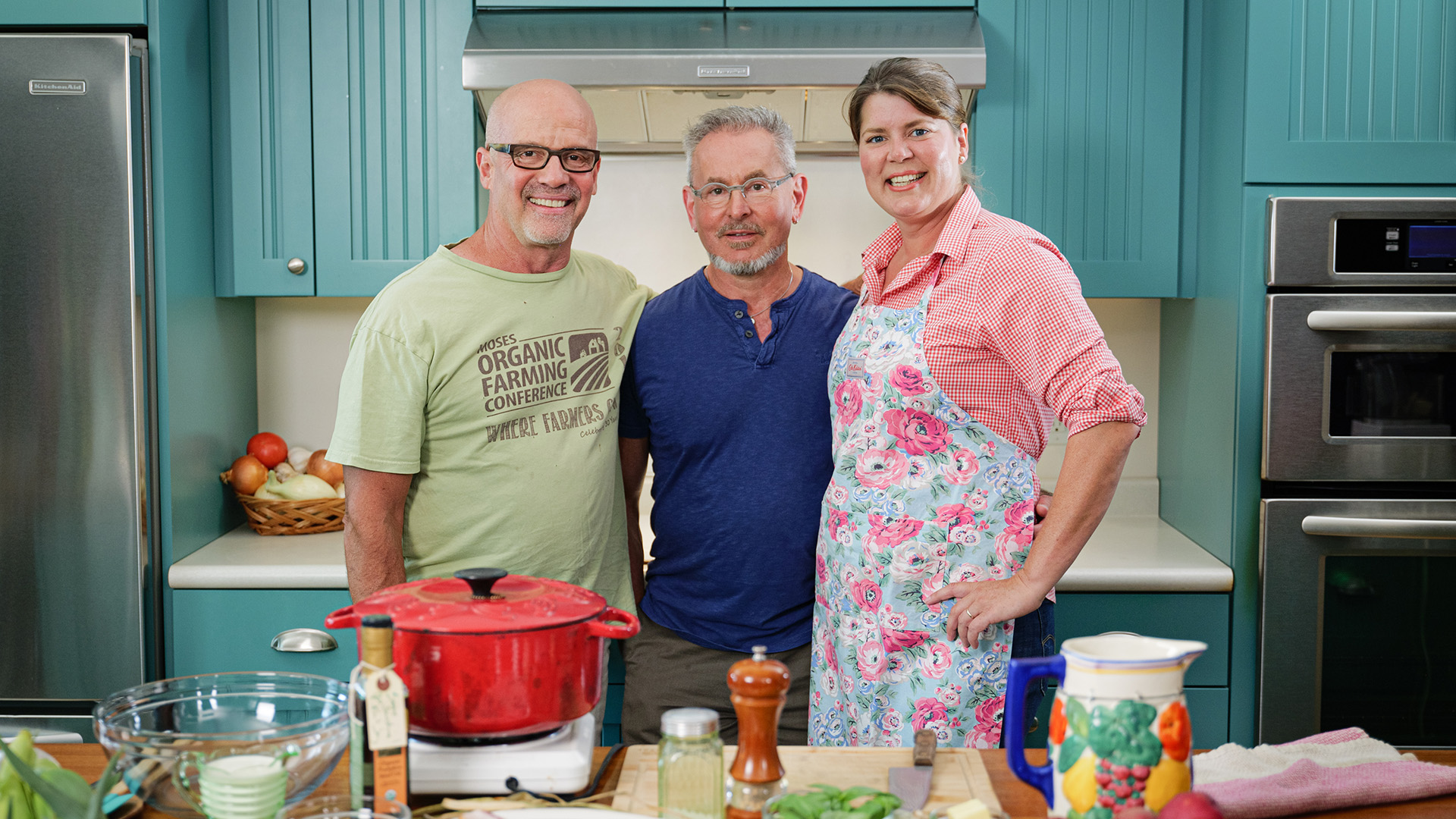
Ken Seguine and Jay Gilbertson, of Hay River Foods, with Around the Farm Table host Inga Witscher. Photo by Colin Crowley. Top image by Sara Stathas.
PBS Wisconsin: What’s it been like for you to be part of that community?
Ken: It’s been great. Both of us are the type of people, we don’t give it the chance to not be great. We’re both doers, joiners. Jay was president of the local cooperative that publishes the local newspaper. I’m on the Prairie Farm school board, I’m chairman of our township planning commission, so we’re both very active. We know every single neighbor around us, and we both volunteer with our local food pantry. We’re always looking for something to do to help our community.
PBS Wisconsin: What was it like to have the PBS Wisconsin film crew around?
Ken: All day long they were just constantly, “What if we did this? We could try this.” Lots of energy, lots of suggestions. Colin [Crowley, producer] was wonderful. They were very ambitious. They wanted it to be national caliber show. Anytime you’re around people who are professional, they know what they’re doing, they work together well, it was exciting and fun to be with them.
PBS Wisconsin: As a local food producer, what impact do you think Around the Farm Table has on the local food movement?
Jay: There’s so much more to farming than corn and soy, and one of the many things that Inga’s show brings out is how an individual farm can zero in on one thing, like us with pumpkin seed oil and like [Maggie Sheehan, of Green Light Farm.] She’s a flower person and she also makes these beautiful wreaths in the winter. There are so many other things you can do with a piece of land, and that seems to be Inga’s focus is to go out and find these farms where people are doing these really unique things but maybe you don’t know, and this is how they do it and here’s their face and their story. Whenever we have a story behind something, you’re going to choose that when you’re shopping. There are millions of choices. She’s doing so much for small farmers like us.
 Passport
Passport